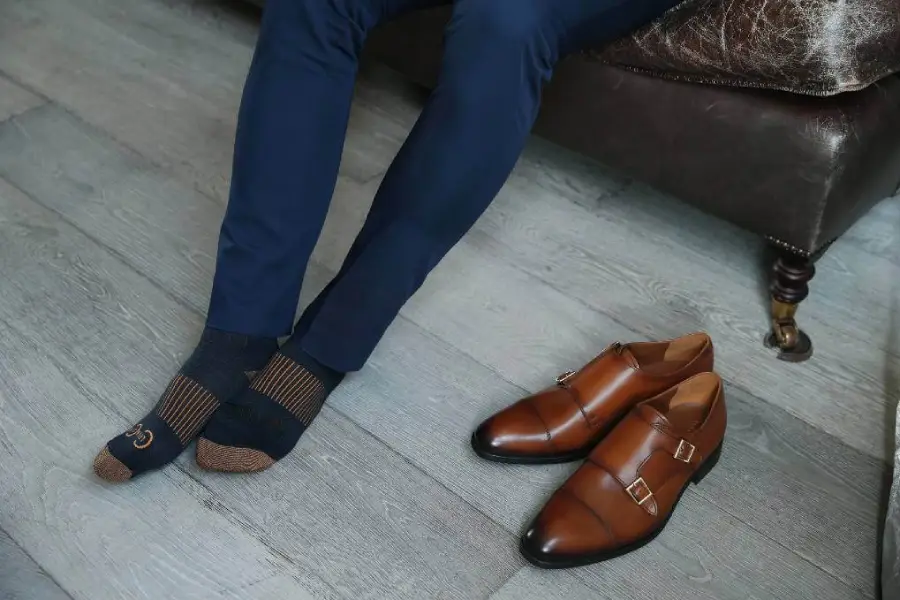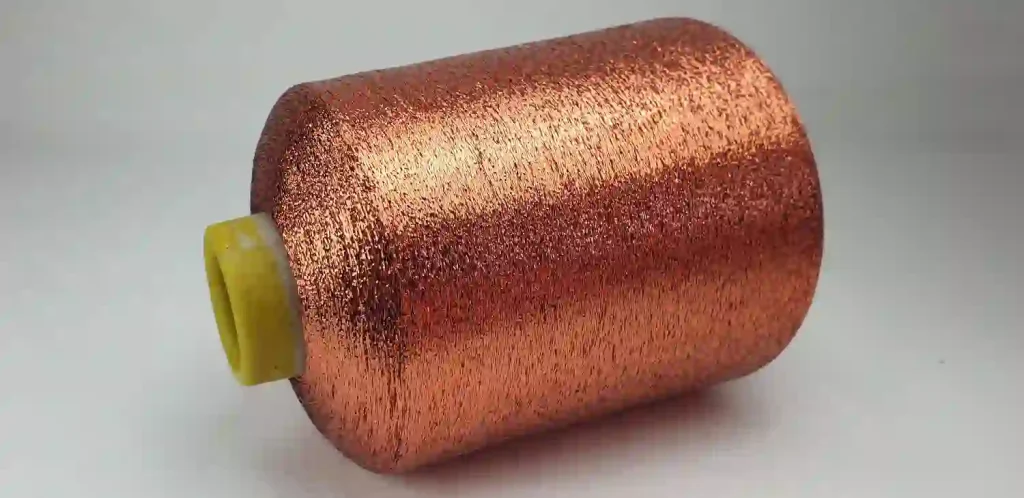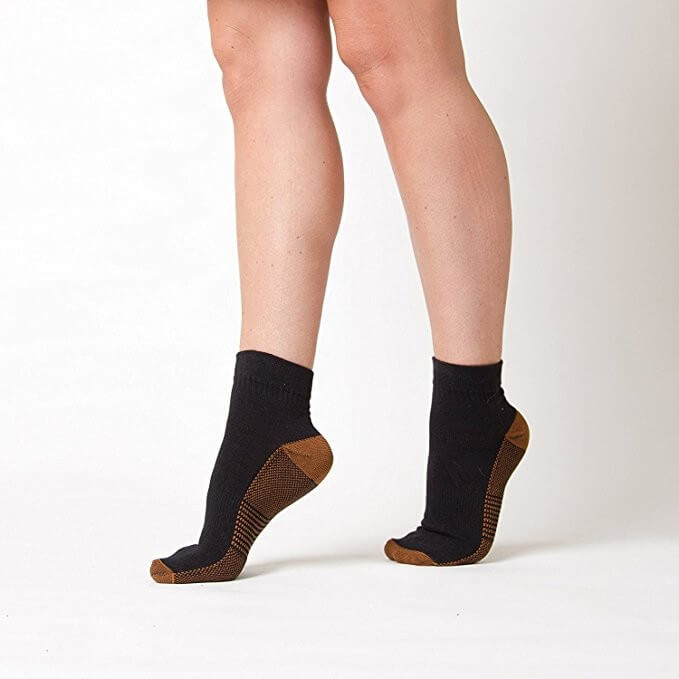The intersection of textile innovation and wellness technology has produced numerous specialized garments claiming health benefits beyond traditional clothing functions. Among these innovations, copper-infused socks have gained significant attention for their purported healing properties and health benefits. These specialized garments incorporate copper—an essential mineral with documented antimicrobial and biological properties—directly into textile fibers, potentially creating wearable wellness tools that address multiple foot-related concerns. This comprehensive exploration examines the science behind copper socks, evaluating both the established benefits and the more speculative claims to provide a balanced perspective on their potential role in health maintenance, pain management, and athletic recovery.

The History of Copper in Medicine: Ancient Roots to Modern Applications
Copper has been used for healing for thousands of years across various civilizations. Ancient Egyptians used copper to sterilize water and treat wounds, while Greek and Roman doctors utilized copper for pulmonary diseases and even created copper-based surgical tools with lower infection rates. This practice was also prevalent in traditional Chinese and Ayurvedic medicine for water purification and health treatments.
In the 20th century, scientific understanding of copper’s biological role grew, particularly its importance in collagen formation, iron metabolism, and antioxidant functions. Research in the 1970s and 1980s validated its antimicrobial properties, proving copper’s ability to kill bacteria, viruses, and fungi. This led to copper’s use in modern medical applications like antimicrobial surfaces and wound dressings.
The development of copper-infused textiles emerged in the early 2000s, allowing copper’s benefits to persist through repeated washes, making it possible to integrate it into everyday garments. This innovation bridges the gap between ancient healing practices and modern technology, demonstrating how traditional knowledge sometimes predicts scientific breakthroughs.
Understanding Copper’s Antimicrobial Properties
Copper’s antimicrobial properties form the basis of many health claims associated with copper-infused socks. Here’s the kicker… copper ions disrupt microbial cell membranes through contact killing, which prevents the growth of harmful pathogens, including fungi and bacteria linked to foot odor and infections. This mechanism is highly effective as copper interacts with multiple cellular components, including DNA and proteins, making resistance development unlikely.
Studies have shown that copper is effective against common foot-related pathogens like athlete’s foot fungi (Trichophyton), bacteria (Brevibacterium, Staphylococcus), and other microorganisms. Copper-infused textiles position the metal for direct contact with potential pathogens, creating a hostile environment for them to thrive. The efficacy of copper-infused socks depends on factors such as copper concentration, distribution, and the type of copper compound used.
Moisture plays a crucial role in copper’s effectiveness, as it facilitates ion release for contact killing. This is especially beneficial in socks, where the naturally moist foot environment enhances copper’s antimicrobial action. While laboratory studies confirm copper’s potency, real-world performance can vary based on how the copper is implemented in socks.
| Factor | Impact on Effectiveness | Considerations |
|---|---|---|
| Copper Concentration | Higher concentrations provide stronger effects | Balancing comfort and effectiveness |
| Copper Compound | Different forms (oxide, salts) show varied efficacy | Product design and material choices |
| Moisture Environment | Facilitates ion release for antimicrobial action | Ideal for foot moisture conditions |
Circulation Support: How Copper May Influence Blood Flow
Copper, known for its antimicrobial properties, may also offer circulatory benefits for foot health. It plays a vital role in maintaining blood vessel strength and elasticity by aiding collagen and elastin production. Copper deficiency can weaken blood vessels, while adequate levels support vascular function. However, evidence for copper’s direct circulatory impact through socks remains limited.
Some studies suggest that copper-infused fabrics could potentially enhance local blood flow by interacting with nitric oxide pathways, which help dilate blood vessels. Copper’s thermal conductivity might also help regulate foot temperature, preventing cold-induced vasoconstriction and maintaining better circulation in cold conditions, especially for people with issues like Raynaud’s phenomenon.
While copper’s vascular benefits are supported by research in blood vessel maintenance, its effects through sock application are still unclear. Copper socks may provide mild circulatory support, but other factors like activity levels, footwear, and overall health are more significant for circulation than copper alone.
Pain Management Applications: Arthritis and Beyond
Copper-infused socks are often marketed for their potential to alleviate pain, especially for individuals with conditions like arthritis. Historically, copper has been used in various forms, like bracelets, to ease joint pain. While some research suggests copper compounds may have anti-inflammatory effects, the scientific evidence is mixed. Copper might reduce pain by modulating inflammation and supporting enzymes involved in pain signaling. Additionally, small amounts of copper absorbed through the skin could address copper deficiencies linked to pain.
However, clinical studies show variable results. Some report subjective pain relief, while others find no significant benefits compared to non-copper alternatives. The placebo effect—where users experience pain relief simply due to believing in the treatment—plays a significant role in these reports.
Copper socks may offer relief for individuals with inflammatory conditions, especially arthritis, but their effects can vary depending on personal factors. While they may provide some benefit, copper socks should be viewed as a complementary tool rather than a primary pain management solution. They are low-risk and reasonably priced, making them a viable option for additional pain relief, but they shouldn’t replace established treatments like medication and physical therapy. Always consult healthcare providers for serious or worsening conditions.
The Manufacturing Process: How Copper Becomes Wearable
The process of transforming copper into functional, comfortable socks involves sophisticated manufacturing that balances technical needs with wearability. Copper can be integrated into textiles through several methods, each with its own benefits and challenges. The simplest approach involves coating fibers with copper compounds post-production. While easy to apply, this method provides limited durability as the copper can wear off over time.
A more advanced technique incorporates copper directly into fibers during production, embedding copper particles within synthetic polymers. This creates more durable socks that resist wear and washing. Some methods chemically bond copper to the fibers, offering strong resistance to degradation but at higher production costs.
The type of copper used also influences performance. Metallic copper offers excellent conductivity but can be abrasive, while copper oxide (CuO) is commonly used for its antimicrobial properties with fewer production complications. The copper concentration and distribution within the sock affect both its performance and comfort. Higher concentrations enhance antimicrobial benefits but may increase costs and reduce softness.
Manufacturing copper-infused socks requires specialized quality control measures. Copper content is tested with chemical analysis techniques, and antimicrobial effectiveness is validated through standardized testing. These added production steps help explain the higher price of copper-infused socks compared to regular ones, reflecting the cost of materials and the advanced processes used to ensure their durability and functionality.
Durability Considerations: Longevity of Copper Benefits
The longevity of copper’s functional benefits in socks is crucial for consumers. But here’s the kicker… understanding the factors that affect copper retention helps manage expectations and maximize performance. Copper loss from washing and wear is the main concern, as the benefits depend on copper being in direct contact with skin. Manufacturing methods matter; surface treatments degrade faster than methods that bond copper within fibers.
High-quality socks typically maintain antimicrobial benefits through 50-100 washes if properly cared for, while budget options may lose efficacy after just 15-20 washes. Washing practices play a key role—cold or lukewarm water extends lifespan, while hot water accelerates copper loss. Harsh detergents, particularly those with chelating agents, can strip copper, and fabric softeners can reduce effectiveness by creating a barrier.
Drying methods also impact copper retention. High-heat machine drying accelerates degradation, while air drying is gentler. Wear patterns, especially in high-friction areas like heels and forefeet, lead to faster copper depletion. Some designs address this with higher copper concentrations in these areas.
To extend the lifespan of copper-infused socks, alternate between pairs to reduce washing frequency, wash immediately after heavy perspiration, and store in cool, dry places. Proper care ensures that copper socks maintain their functional benefits, not just their appearance.
| Factor | Impact on Durability | Best Practice |
|---|---|---|
| Water Temperature | High heat accelerates copper loss | Wash with cold or lukewarm water |
| Detergents | Harsh chemicals strip copper | Use gentle, pH-neutral detergent |
| Fabric Softeners | Create a coating that reduces effectiveness | Avoid fabric softeners |
| Washing Cycle | Aggressive agitation damages fibers | Use gentle wash cycles |
| Drying Methods | High heat degrades copper bonds | Air dry or use low heat settings |
Compression + Copper: A Synergistic Combination
Premium copper-infused socks often combine copper technology with graduated compression, which is tightest at the ankle and decreases upwards, offering synergistic benefits. This combination can provide a more comprehensive solution for foot and leg issues by addressing circulation, microbial, and comfort concerns simultaneously. Graduated compression enhances venous return, reducing swelling, fatigue, and discomfort by supporting blood flow back to the heart, especially for those who stand or sit for long periods. Copper, known for its antimicrobial and anti-inflammatory properties, tackles foot hygiene and inflammation challenges, complementing compression’s circulatory benefits.

These socks are particularly useful for individuals with complex foot health needs, such as those who experience fatigue and swelling during long shifts or athletes managing exercise-induced inflammation. The combination also benefits those with diabetes or vascular conditions, where circulatory support and infection prevention are critical. Manufacturing these socks is complex, requiring precise compression profiles and copper distribution to ensure both benefits are maintained.
The value of these socks depends on individual needs. While they offer comprehensive benefits for those with multiple concerns, individuals with more specific issues might find more value in socks focusing on either compression or copper individually.
| Feature | Benefit | Best For |
|---|---|---|
| Graduated Compression | Reduces swelling, fatigue, and discomfort | Extended standing, sitting, or athletes |
| Copper Infusion | Antimicrobial and anti-inflammatory | Hygiene issues, infections, inflammation |
| Combination | Addresses circulation, microbial, comfort | Those with multiple foot health concerns |
Diabetic Foot Care: Special Considerations and Benefits
Individuals with diabetes face unique foot health challenges, making specialized footwear essential. Copper-infused socks can offer several benefits specific to diabetic foot care. Diabetes often causes peripheral neuropathy (nerve damage), which reduces sensation in the feet, leaving injuries unnoticed until significant damage occurs. Circulatory problems further impair healing, making foot care even more critical for diabetics.
Copper’s antimicrobial properties are particularly beneficial, as they can help reduce the microbial load on the skin, lowering infection risks. For diabetics, even minor infections can rapidly escalate due to poor circulation and immune response. Additionally, some research suggests copper can promote wound healing by supporting angiogenesis and collagen production, both of which are crucial for diabetic individuals who experience slower healing.
Comfort is another consideration in diabetic foot care. Copper-infused socks are often seamless, preventing friction and pressure points that could cause irritation. Moisture-wicking designs help avoid skin maceration, which can lead to further injuries. Some copper socks also provide additional cushioning in high-pressure areas, offering protection to feet that may lack natural padding due to diabetes-related changes in fat distribution.
When choosing copper socks, the copper content and fabric construction must balance antimicrobial effectiveness with gentle contact to avoid irritation. The fit should be non-constrictive to preserve circulation while providing necessary support. It’s important for diabetics to consult healthcare providers to ensure they select the right socks for their specific needs, as part of a comprehensive foot care plan.
Athletic Recovery: Copper Socks in Sports Applications
Athletes face unique recovery challenges after training—muscle micro-damage, inflammation, and waste buildup all demand fast, efficient recovery strategies. Copper-infused compression socks have become a tool many athletes turn to during this post-exercise window.
What Copper Brings to Recovery
Copper’s possible anti-inflammatory and antimicrobial properties offer extra support. By helping control excessive inflammation, copper may reduce discomfort without blocking the natural healing needed for performance gains. Its antibacterial function also keeps socks cleaner, a plus for athletes wearing them after sweaty workouts or during long travel.
Combining Copper and Compression
Compression is already well-known for reducing swelling, aiding circulation, and relieving muscle soreness. When combined with copper, these socks may offer added benefits—though current studies on copper’s specific athletic recovery effects remain limited. Still, many believe this combination helps accelerate recovery.
When Athletes Use Copper Socks
- Endurance athletes (like runners or cyclists) wear them after long sessions or races.
- Team athletes use them between games.
- Lifters and strength trainers wear them to manage leg swelling after heavy training.
Some athletes even sleep in them—if the socks are designed for overnight comfort.
Is the Extra Cost Worth It?
Copper-infused socks cost more than standard compression ones. For serious athletes with tight recovery windows, they may be worth it. Others may find regular compression gear sufficient.
Separating Science from Marketing: Evaluating Copper Claims
The market for copper-infused socks includes a variety of claims, ranging from well-supported benefits to more exaggerated statements. Here’s the kicker… evaluating these claims requires understanding the difference between solid scientific evidence and marketing hype. The strongest evidence backs copper’s antimicrobial properties, with studies showing its effectiveness in killing bacteria that cause foot odor and infections. This is the most reliable benefit consumers can expect from copper-infused socks.
Moderate support exists for copper’s role in collagen formation and tissue maintenance, as copper is a necessary component for enzymes involved in these processes. However, claims about skin appearance improvements or accelerated healing through socks are less supported. Speculative claims, such as reducing whole-body inflammation or generalized pain relief from wearing copper socks, lack strong scientific backing.
Marketing claims often include vague terms like “supports” or “promotes,” which may indicate limited evidence. Ready for the good part? exaggerated before-and-after scenarios or testimonials may not represent typical outcomes. Claims that copper socks can replace medical treatments should be met with skepticism, as they could delay necessary professional care.
To evaluate copper socks, consider products with clear information on copper content and testing protocols. Higher copper concentrations tend to offer stronger antimicrobial effects, though they may affect comfort. Look for realistic descriptions of benefits and avoid exaggerated claims. Copper-infused socks can offer genuine benefits, especially for odor control and infection risk, but their effects are often incremental rather than transformative. They should be seen as valuable additions to overall foot care, not miracle solutions.
Choosing Quality Copper Socks: What to Look For
The design, materials, and manufacturing quality of copper socks vary significantly, impacting both performance and value. Here’s the kicker… understanding key factors helps consumers make informed decisions. Copper content is a major quality indicator, as higher concentrations provide stronger antimicrobial benefits but may affect comfort and cost. Copper oxide (CuO) is common for balancing effectiveness with manufacturing ease, while premium options may use copper-zinc alloys for enhanced performance.
Material choice affects comfort and functionality. Synthetic fibers like nylon and polyester excel at moisture management, making them ideal for athletic use, while natural fibers like cotton and wool are better for comfort and temperature regulation. Premium options blend materials to balance these benefits based on wear conditions.
Construction quality also influences comfort and durability. Features like seamless toes, reinforced heels, and anatomical shaping enhance fit and longevity. Graduated compression socks require precise construction to ensure proper pressure for circulatory benefits. Ready for the good part? higher-quality socks maintain their antimicrobial properties through more wash cycles, making them more cost-effective over time despite higher initial prices.
Specialized designs, like diabetic-friendly socks, offer added value for those with specific foot conditions. Extra-wide options and targeted cushioning zones address foot swelling and athletic impact, enhancing comfort. When evaluating price-to-value, consider both short-term costs and long-term performance. Budget options may wear out quickly, while mid-range and premium socks deliver better durability and more effective benefits over time. This comprehensive approach helps consumers choose the best socks for their needs.
Conclusion
Copper-infused socks combine ancient healing practices with modern textile technology, offering both scientifically backed benefits and realistic limitations. The most proven advantage is copper’s antimicrobial properties, which help control odor, reduce infection risks, and improve foot hygiene, particularly for active individuals or those with compromised immune systems. The claims of copper’s anti-inflammatory and circulatory benefits are less definitive. While some basic science suggests potential advantages, the evidence for substantial effects from copper-infused textiles remains variable. These benefits may depend on individual conditions, copper levels, and even placebo responses.

Athletes may enjoy the antimicrobial protection and potential recovery benefits during training, while individuals with diabetes or vascular issues could benefit from the infection prevention properties. For those with inflammatory foot conditions, copper socks may provide subjective comfort improvements. When considering copper-infused socks, it’s important to manage expectations. The antimicrobial benefits are the most reliably delivered, while the anti-inflammatory effects may vary. Copper socks are valuable tools for foot care, offering genuine benefits when used appropriately with realistic expectations.
FAQ Section
How do copper socks work to provide health benefits?
Copper socks use copper ions to kill bacteria and fungi, reducing infections. They may also offer anti-inflammatory and circulation benefits, supporting foot health.
How long do the copper benefits last through washing and wearing?
Copper socks retain their benefits for 30-50 washes if cared for properly, using cold water, mild detergent, and air drying to maintain their antimicrobial properties.
Can copper socks help with diabetic foot problems?
Yes, they can reduce infection risk and improve comfort with antimicrobial properties and seamless design, but they should complement medical care for diabetes.
Do copper socks help with arthritis pain?
Some users report relief, possibly due to copper’s anti-inflammatory effects, but clinical evidence is limited. Copper socks may complement other treatments but shouldn’t replace them.
What’s the difference between cheap and expensive copper socks?
Expensive socks offer higher copper concentrations, better durability, and enhanced features like seamless toes and reinforced wear points, providing longer-lasting benefits.
